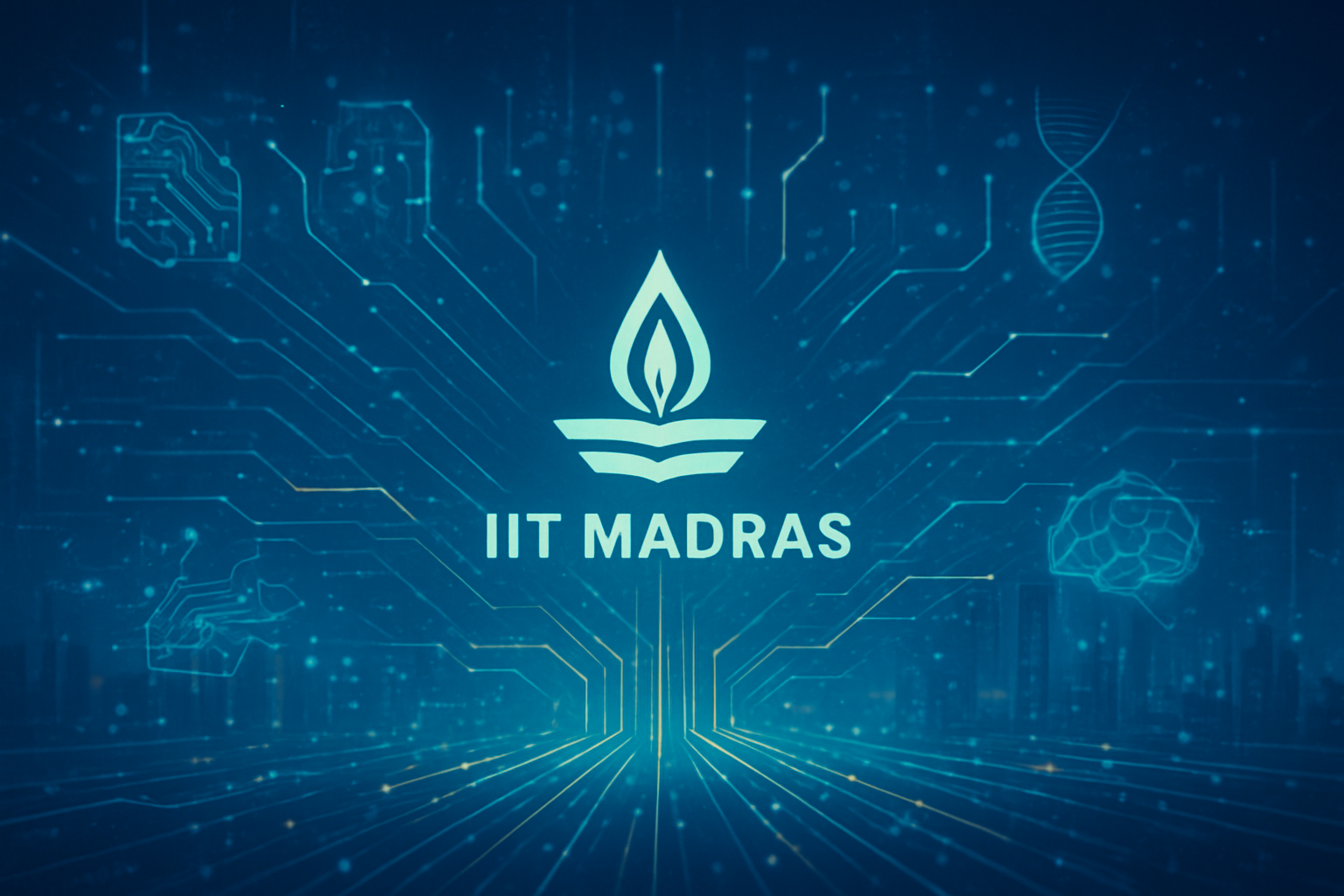As of December 2025, India has solidified its position as a pivotal battleground for the world's leading AI search engines. The subcontinent, with its vast and rapidly expanding digital user base, diverse linguistic landscape, and mobile-first internet habits, has become a critical testbed for global AI players. The intense competition among Google Gemini, OpenAI's (NASDAQ: MSFT) ChatGPT, xAI's Grok, and Perplexity AI is not merely a fight for market share; it's a dynamic race to redefine how a billion-plus people access information, innovate, and interact with artificial intelligence in their daily lives. This fierce rivalry is accelerating the pace of AI innovation, driving unprecedented localization efforts, and fundamentally reshaping the future of digital interaction in one of the world's fastest-growing digital economies.
The immediate significance of this competition lies in its transformative impact on user behavior and the strategic shifts it necessitates from tech giants. Google Gemini, deeply integrated into the ubiquitous Google ecosystem, has emerged as the most searched AI tool in India, a testament to its aggressive localization and multimodal capabilities. Perplexity AI, with its unique "answer engine" approach and strategic partnerships, is rapidly gaining ground, challenging traditional search paradigms. Grok, leveraging its real-time data access and distinctive personality, is carving out a significant niche, particularly among younger, tech-savvy users. Meanwhile, ChatGPT, while still commanding a substantial user base, is recalibrating its strategy to maintain relevance amidst the surge of tailored, India-centric offerings. This vibrant competitive environment is not only pushing the boundaries of AI technology but also setting a global precedent for AI adoption in diverse, emerging markets.
Technical Prowess and Differentiated Approaches in India's AI Landscape
The technical underpinnings and unique capabilities of each AI search engine are central to their performance and market penetration in India. Google Gemini, particularly its advanced iterations like Gemini 3, stands out for its deep multimodal architecture. Leveraging Google's (NASDAQ: GOOGL) AI Hypercomputer and Trillium TPUs, Gemini 3 offers a significantly expanded context window, capable of processing massive amounts of diverse information—from extensive documents to hours of video. Its strength lies in natively understanding and combining text, image, audio, and video inputs, a critical advantage in India where visual and voice searches are booming. Gemini's support for eight Indian languages and real-time voice assistance in Hindi (with more languages rolling out) demonstrates a strong commitment to localization. This multimodal and multilingual approach, integrated directly into Google Search, provides a seamless, conversational, and context-aware experience that differentiates it from previous, often modality-specific, AI models. Initial reactions from the AI research community in India have lauded Google's "AI built by Indians, for Indians" philosophy, particularly its investments in local talent and data residency pledges.
ChatGPT, powered by OpenAI's GPT-4o, represents a significant leap in generative AI, offering twice the speed of its predecessor, GPT-4 Turbo, and generating over 100 tokens per second. GPT-4o's real-time multimodal interaction across text, image, audio, and video makes it highly versatile for applications ranging from live customer support to simultaneous language translation. Its ability to produce detailed, coherent, and often emotionally resonant responses, while maintaining context over longer conversations, sets it apart from earlier, less sophisticated chatbots. The revamped image generator further enhances its creative capabilities. While ChatGPT's core architecture builds on the transformer model, GPT-4o's enhanced speed and comprehensive multimodal processing mark a notable evolution, making complex, real-time interactions more feasible. India remains a pivotal market for ChatGPT, with a substantial mobile app user base, though monetization challenges persist in the price-sensitive market. OpenAI's exploration of local data centers is seen as a positive step for enterprise adoption and regulatory compliance.
Grok, developed by Elon Musk's xAI, distinguishes itself with real-time data access from X (formerly Twitter) and a uniquely witty, humorous, and unfiltered conversational style. Its latest iterations, Grok 3 and Grok 4, boast impressive context windows (128,000 and 131,072 tokens respectively) and multimodal features, including vision and multilingual audio support (e.g., Hindi, Telugu, Odia via transliteration). Grok's ability to provide up-to-the-minute responses on current events, directly from social media streams, offers a distinct advantage over models trained on static datasets. Its personality-driven interaction style contrasts sharply with the more neutral tones of competitors, resonating with users seeking engaging and often irreverent AI. Grok's rapid rise in India, which has contributed significantly to its user base, underscores the demand for AI that is both informative and entertaining. However, its unfiltered nature has also sparked debate regarding appropriate AI behavior.
Perplexity AI positions itself as an "answer engine," fundamentally challenging the traditional search model. It leverages advanced large language models (including GPT-4 Omni and Claude 3.5 for its Pro subscription) combined with real-time web search capabilities to synthesize direct, contextual answers complete with inline source citations. This commitment to transparency and verifiable information is a key differentiator. Features like "Focus" (targeting specific sources) and "Pro Search" (deeper exploration) enhance its utility for research-oriented users. Perplexity's approach of providing direct, cited answers, rather than just links, marks a significant departure from both conventional search engines and general-purpose chatbots that may not always provide verifiable sources for their generated content. India has rapidly become Perplexity's largest user base, a surge attributed to a strategic partnership with Bharti Airtel (NSE: AIRTELPP.NS), offering free Pro subscriptions. This move is widely recognized as a "game-changer" for information access in India, demonstrating a keen understanding of market dynamics and a bold strategy to acquire users.
Reshaping the AI Industry: Competitive Dynamics and Strategic Advantages
The intense competition among these AI search engines in India is profoundly reshaping the strategies and market positions of AI companies, tech giants, and nascent startups alike. India, with its projected AI market reaching $17 billion by 2027, has become a strategic imperative, compelling players to invest heavily in localization, infrastructure, and partnerships.
Google (NASDAQ: GOOGL), through Gemini, is reinforcing its long-standing dominance in the Indian search market. By deeply integrating Gemini across its vast ecosystem (Search, Android, Gmail, YouTube) and prioritizing India for advanced AI innovations like AI Mode and Search Live, Google aims to maintain its leadership. Its multimodal search capabilities, spanning voice, visual, and interactive elements, are crucial for capturing India's mobile-first user base. Strategic partnerships, such as with Reliance Jio (NSE: RELIANCE.NS), offering complimentary access to Gemini Pro, further solidify its market positioning and ecosystem lock-in. Google's commitment to storing data generated by its advanced Gemini-3 platform within India's borders also addresses critical data sovereignty and residency requirements, appealing to enterprise and public sector clients.
OpenAI's ChatGPT, despite facing stiff competition from Gemini in trending searches, maintains a significant competitive edge due to its massive global user base and brand recognition. India's large user base for ChatGPT, surpassing even the US in mobile app users at one point, underscores its widespread appeal. OpenAI's "ChatGPT Go" plan, an affordable, India-first subscription, and its reported exploration of setting up data centers in India, demonstrate a strategic pivot towards localization and monetization in a price-sensitive market. Microsoft's (NASDAQ: MSFT) substantial investment in OpenAI also positions it indirectly in this competitive landscape through its Copilot offerings.
Perplexity AI has emerged as a significant disruptor, leveraging a bold strategy of mass user acquisition through strategic partnerships. Its exclusive collaboration with Bharti Airtel (NSE: AIRTELPP.NS), offering a free one-year Perplexity Pro subscription to 360 million customers, is a masterclass in market penetration. This move has catapulted India to Perplexity's largest user base globally, showcasing the power of distribution networks in emerging markets. Perplexity's focus on cited, conversational answers also positions it as a credible alternative to traditional search, particularly for users seeking verifiable information. This aggressive play could disrupt existing product services by shifting user expectations away from link-based search results.
xAI's Grok is carving out its niche by leveraging its real-time data access from X (formerly Twitter) and a distinctive, unfiltered personality. This unique value proposition resonates with a segment of users looking for immediate, often humorous, insights into current events. Grok's rapid rise in trending searches in India indicates a strong appetite for more engaging and personality-driven AI interactions. Its accessibility, initially through X Premium+ and later with a free version, also plays a role in its market positioning, appealing to the vast X user base.
For Indian AI startups, this intense competition presents both challenges and opportunities. While competing directly with tech giants is difficult, there's a burgeoning ecosystem for specialized, localized AI solutions. Startups focusing on Local Language Models (LLMs) like BharatGPT and Hanooman, supporting multiple Indian languages and catering to specific sectors like healthcare and education, stand to benefit. Government initiatives like the "Kalaa Setu Challenge" foster innovation, and the thriving startup ecosystem, with over 2000 AI startups launched in the past three years, attracts significant investment. The competition also accelerates the demand for AI talent, creating opportunities for skilled professionals within the startup landscape. Overall, this dynamic environment is accelerating innovation, forcing companies to localize aggressively, and redefining the competitive landscape for AI-powered information access in India.
A New Era: Wider Significance and the Broader AI Landscape
The fierce competition among Google Gemini, ChatGPT, Grok, and Perplexity in India's AI search market in December 2025 is more than a commercial rivalry; it signifies a pivotal moment in the broader AI landscape. India is not just adopting AI; it's emerging as a global leader in its development and application, driving trends that will resonate worldwide.
This intense competition fits squarely into the broader global AI trend of shifting from experimental models to mainstream, ubiquitous applications. Unlike earlier AI breakthroughs confined to academic labs, 2024-2025 marks the widespread integration of AI chatbots into daily life and core business functions in India. The country's rapid adoption of AI tools, with workplace AI adoption surging to 77% in 2025, positions it as a blueprint for how AI can be scaled in diverse, emerging economies. The emphasis on multimodal and conversational interfaces, driven by India's mobile-first habits, is accelerating a global paradigm shift away from traditional keyword search towards more intuitive, natural language interactions.
The societal and economic impacts are profound. AI is projected to be a primary engine of India's digital economy, contributing significantly to its Gross Value Added and potentially adding $1.7 trillion to the Indian economy by 2035. This competition fuels digital inclusion, as the development of multilingual AI models breaks down language barriers, making information accessible to a broader population and even aiding in the preservation of endangered Indian languages. AI is driving core modernization across sectors like healthcare, finance, agriculture, and education, leading to enhanced productivity and streamlined services. The government's proactive "IndiaAI Mission," with its substantial budget and focus on computing infrastructure, skill development, and indigenous models like BharatGen, underscores a national commitment to leveraging AI for inclusive growth.
However, this rapid expansion also brings potential concerns. The Competition Commission of India (CCI) has raised antitrust issues, highlighting risks of algorithmic collusion, abuse of dominant market positions, and barriers to entry for startups due due to concentrated resources. Data privacy and security are paramount, especially with the rapid deployment of AI-powered surveillance, necessitating robust regulatory frameworks beyond existing laws. Bias in AI systems, stemming from training data, remains a critical ethical consideration, with India's "Principles for Responsible AI" aiming to address these challenges. The significant skills gap for specialized AI professionals and the scarcity of high-quality datasets for Indian languages also pose ongoing hurdles.
Compared to previous AI milestones, this era is characterized by mainstream adoption and a shift from experimentation to production. India is moving from being primarily an adopter of global tech to a significant developer and exporter of AI solutions, particularly those focused on localization and inclusivity. The proactive regulatory engagement, as evidenced by the CCI's market study and ongoing legislative discussions, also marks a more mature approach to governing AI compared to the largely unregulated early stages of past technological shifts. This period signifies AI's evolution into a foundational utility, fundamentally altering human-computer interaction and societal structures.
The Horizon: Future Developments and Expert Predictions
The future of AI search in India, shaped by the current competitive dynamics, promises an accelerated pace of innovation and transformative applications in the coming years. Experts predict that AI will be a "game-changer" for Indian enterprises, driving unprecedented scalability and productivity.
In the near term (1-3 years), we can expect significantly enhanced personalization and contextualization in AI search. Models will become more adept at tailoring results based on individual user behavior, integrated with other personal data (with consent), to provide highly customized and proactive suggestions. Agentic AI capabilities will become widespread, allowing users to perform real-world tasks directly within the search interface—from booking tickets to scheduling appointments—transforming search into an actionable platform. Multimodal interaction, combining text, voice, and image, will become the norm, especially benefiting India's mobile-first users. There will be a sustained and aggressive push for deeper vernacular language support, with AI models understanding and generating content in an even wider array of Indic languages, crucial for reaching Tier 2 and Tier 3 cities. Content marketers will need to adapt to "Answer Engine Optimization (AEO)," as the value shifts from clicks to engagement with AI-generated answers.
Looking at the long term (3+ years), AI is projected to be a monumental economic driver for India, potentially adding $957 billion to its gross value by 2035 and contributing significantly to the $1 trillion digital economy target by 2028. India aims to position itself as a "Global AI Garage," a hub for developing scalable, affordable, and socially impactful AI solutions, particularly for developing nations. This vision is underpinned by the IndiaAI Mission, which supports national GPU pools and indigenous model development. Advanced Natural Language Processing (NLP) infrastructure tailored for India's linguistic diversity will lead to deeper AI integration across various societal functions, from healthcare and finance to agriculture and education. AI will be ubiquitous, redefining industries, governance, and daily routines, with a strong focus on inclusive growth and accessibility for all sections of society. Ethical AI governance will evolve with robust frameworks ensuring responsible and safe AI deployment, balancing innovation with societal well-being.
Potential applications and use cases on the horizon are vast and impactful. In healthcare, AI will enable early disease diagnosis, personalized medicine, and AI-powered chatbots for patient support. Finance will see enhanced fraud detection, improved risk management, and AI-powered virtual assistants for banking. Agriculture will benefit from optimized crop management, yield prediction, and real-time advice for farmers. Education will be revolutionized by personalized learning experiences and AI-based tutoring in remote areas. E-commerce and retail will leverage hyper-personalized shopping and intelligent product recommendations. Governance and public services will see AI voice assistants for rural e-governance, smart city planning, and AI-powered regulatory assistants.
However, significant challenges need to be addressed. The lack of high-quality, compliant data for training AI models, especially for Indian languages, remains a hurdle. A considerable skills gap for specialized AI professionals persists, alongside limitations in compute and storage infrastructure. The high cost of AI implementation can be a barrier for Small and Medium Enterprises (SMEs). Ethical considerations, addressing biases, and developing comprehensive yet flexible regulatory frameworks are crucial. Operationalizing AI into existing workflows and overcoming institutional inertia are also key challenges. Experts predict that the focus will increasingly shift towards specialized, smaller AI models that deliver task-specific results efficiently, and that SEO strategies will continue to evolve, with AEO becoming indispensable. The ethical implications of AI, including potential job displacement and the need for robust safety research, will remain central to expert discussions.
A Transformative Era: Wrap-up and Future Watch
The year 2025 marks a transformative era for AI search in India, characterized by unprecedented competition and rapid innovation. The aggressive strategies deployed by Google Gemini, Perplexity AI, Grok, and ChatGPT are not just vying for market share; they are fundamentally redefining how a digitally-savvy nation interacts with information and technology. Google Gemini's emergence as the most searched AI tool in India, Perplexity's aggressive market penetration through strategic partnerships, Grok's rapid rise with a unique, real-time edge, and ChatGPT's strategic recalibration with localized offerings are the key takeaways from this dynamic period. India's unique demographic and digital landscape has positioned it as a global hotbed for AI innovation, driving a critical shift from traditional link-based searches to intuitive, conversational AI experiences, especially in vernacular languages.
This development holds immense significance in AI history, serving as a blueprint for AI product scalability and monetization strategies in price-sensitive, mobile-first economies. It represents a fundamental redefinition of search paradigms, accelerating the global shift towards AI-generated, conversational answers. The intense focus on cultural and linguistic adaptation in India is forcing AI developers worldwide to prioritize localization, leading to more inclusive and universally applicable AI models. This period also signifies AI's maturation from novelty to a core utility, deeply integrated into daily life and core business functions.
The long-term impact will be profound: democratizing AI access through affordable and free offerings, driving innovation in multilingual processing and culturally relevant content, reshaping digital economies as AI becomes central to content creation and discoverability, and fostering a robust domestic AI ecosystem that contributes significantly to global AI research and development. India is not just an AI consumer but an increasingly influential AI builder.
In the coming weeks and months, several critical aspects will demand close observation. The success of conversion and monetization strategies for free users, particularly for Perplexity Pro and ChatGPT Go, will reveal the Indian market's willingness to pay for advanced AI services. Further deepening of localization efforts, especially in complex vernacular queries and mixed-language inputs, will be crucial. We should watch for deeper integration of these AI models into a wider array of consumer applications, smart devices, and enterprise workflows, extending beyond simple search. The evolving regulatory landscape and discussions around ethical AI, data privacy, and potential job displacement will shape the responsible development and deployment of AI in India. Finally, the rise of more autonomous AI agents that can perform complex tasks will be a significant trend, potentially leading to a new equilibrium between human and technology in organizations. The Indian AI search market is a microcosm of the global AI revolution, offering invaluable insights into the future of intelligent information access.
This content is intended for informational purposes only and represents analysis of current AI developments.
TokenRing AI delivers enterprise-grade solutions for multi-agent AI workflow orchestration, AI-powered development tools, and seamless remote collaboration platforms.
For more information, visit https://www.tokenring.ai/.









